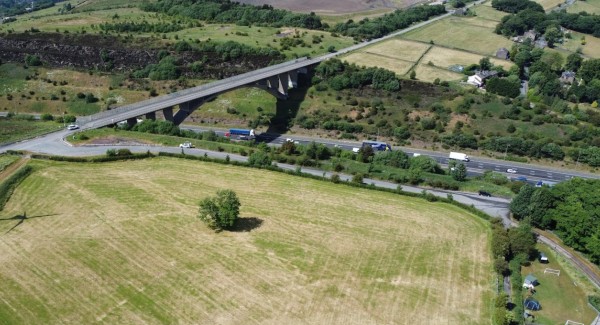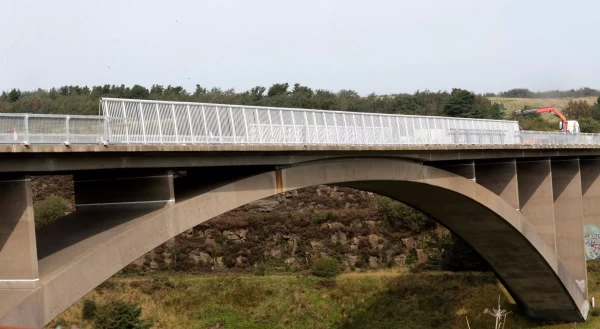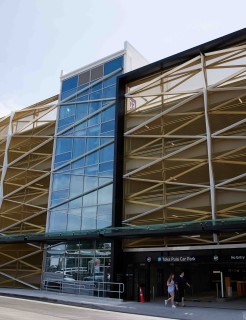Investigating Vortex Induced Oscillation at Scammonden Bridge, England
One of the most famous motorway bridges in England is upgraded with a high anti-climb fence in a bid to prevent people taking their own lives. Within 3 years, the upgrades deteriorated beyond repair due to Vortex Induced Oscillation.
The Situation
On 10th December 1970, the front page of the Huddersfield Daily Examiner hailed the seven mile stretch of the M62 motorway that connects parts of the Pennines in West Yorkshire as the “most exciting section of motorway construction yet undertaken in Britain".
Sitting 37 metres (120 ft) above the motorway is the new Scammonden Bridge. At 120m (410 ft) long, it’s the longest concrete arch bridge in England. The bridge has only a waist high fence on each side and, sadly, in more recent years had become well known as a place where people went to end their lives.
This led to safety improvements in 2020. As part of the GBP1 million upgrade plan, an inwardly curved 2.4m (8ft) high anti-climb fence was installed. However, the high winds that plagued the bridge from the moment it was opened, often making it impossible to cross for pedestrians and which actually led to the development of a new road sign design, depicting a high wind zone, continued to cause problems.
The infill elements of the parapet were immediately susceptible to vortex induced oscillation (VIO) and the fluctuating forces caused structural vibrations. The result was a deterioration of sections of the new anti-climb fence, to the point where they were deemed beyond repair in under 3 years since being commissioned.
Testing Methodology
The client engineer designed a remedial solution involving mass dampening. This needed comprehensive testing before being applied on site, leading to the client engaging Windtech to advise on testing. In turn, Windtech contacted us, knowing the Insol Wind Tunnel has the capability to test large scale samples (as required for this project) at high wind speeds.
We then manufactured the performance mock-up and, along with Windtech engineers, subjected the PMU to a barrage of wind tests, slowly increasing the speed of wind and rotating the PMU on the wind tunnel turntable.
Testing Results & Recommendations
Initial testing was encouraging with the vibrations greatly dampened by the new design. However, testing showed that whilst greatly improved there was still a degree of Vortex Induced Oscillation present the clients engineers believed it necessary to make further improvements.
A successful conclusion was reached after a further iteration of the design which further reduced the vibrations to a negligible level.
Conclusion
The previous anti-climb fence at Scammonden Bridge lasted just 3 years before being damaged beyond repair by Vortex Induced Oscillation. Following solution testing a performance mock-up at WindLab, it could be confirmed the new design would effectively counter the forces of high winds in an exposed area, resulting in a considerably longer lifespan. Importantly, it means the high fencing used to prevent falls (accidental and intentional) can function as intended, making Scammonden Bridge as safe as possible for both pedestrians and motorists.











